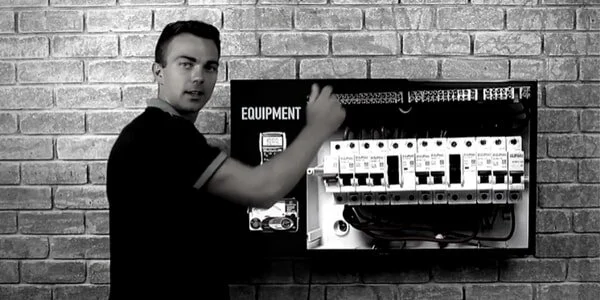VRI Fault Finding Principle - RCD Faults
Midway through an electrical job, have you ever found yourself second-guessing and wondering whether you would be able to locate the fault? It seems like you have exhausted all the resources and the end -- the solution -- is just not in sight. It can be very frustrating.
I have developed the VRI Fault Finding Principle which will reduce the time you spend on locating faults. You can apply it to any faults across a range of electrical appliances and installations of any scale. This step-by-step process will help you to stay organised as you find faults. Your team will become more productive, too.
Not a Member Yet? Access over 400 training videos to help you go to the next level.
The VRI Fault Finding Principle (RCD Faults)
Once you master the VRI Fault Finding Principle, your customers will appreciate how quickly and efficiently you locate the faults and solve their electrical problems. And to top it all, your boss will be happy because s/he would feel like s/he has got a rockstar on their team. The question is -- Are you ready to be that ROCKSTAR?
Many electricians didn't know what to do when they went out to find faults. They didn’t know how long it will take them to do the job and got flustered. Without the framework, they got annoyed on the job. So I created this principle so that you can locate electrical faults like a pro.
In the first step of the VRI Fault Finding Principle, you need to test for Voltage. You can start on the non-live source when there is power loss. When the RCD trips, you should test on the main. It can be an issue with cabling or equipment.
The process requires you to break up the circuits into bits for the ease of locating the fault.
Once you have broken up the circuit, you can turn off the lighting circuit and reset the RCD.
Now, turn on power 1; and if it trips, then don’t worry. You can turn it off. When you turn on your lighting circuit, you will notice that it doesn’t trip. So, turn the power back on and if it trips again, then you have got a power fault -- a fault on the power circuit. However, if both -- the lighting circuit and the line 1 -- trip, then you have got a neutral fault.
In this step, you have to identify that there is no load on the power circuit. Because if you were to run an insulation resistance test right now from earth to active, the fault could run through the neutral back to active through the load. To avoid this, you can go through the house or the building, disconnect all the lights and remove all the plugs from the sockets. And then you can test to make sure.
Sign up to Electricians Success Academy to read and watch the complete VRI Fault Finding Principle.
Ready To Take Your Electrical Business To The Next Level?
Get access to hundreds of on-demand training videos to accelerate your growth and minimise mistakes as you grow in the electrical industry!

